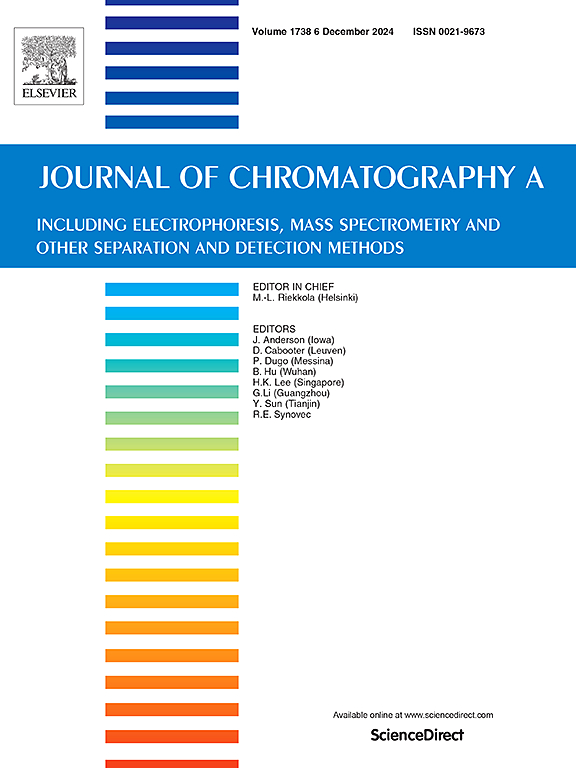Analysis of volatile compounds and vintage discrimination of raw Pu-erh tea based on GC-IMS and GC–MS combined with data fusion
IF 3.8
2区 化学
Q1 BIOCHEMICAL RESEARCH METHODS
引用次数: 0
Abstract
Storage duration significantly influences the aroma profile of raw Pu-erh tea. To comprehensively investigate the differences in the volatile compounds across various vintages of raw Pu-erh teas and achieve the rapid classification of tea vintages, volatile compounds of raw Pu-erh tea with different years (2020–2023) were analyzed using a combination of gas chromatography-ion mobility spectrometry (GC-IMS) and gas chromatography-mass spectrometry (GC–MS). The datasets obtained from both techniques were integrated through low-level and mid-level data fusion strategies. Additionally, partial least squares discriminant analysis (PLS-DA) and random forest (RF) machine learning algorithms were applied to develop predictive models for the classification of tea storage durations. Consequently, GC-IMS and GC–MS identified 54 and 76 volatile compounds, respectively. Notably, the RF model, particularly when coupled with mid-level data fusion, exhibited exceptional predictive accuracy for tea storage time, reaching an accuracy of 100%. These findings provide a reference for elucidating the aroma characteristics of raw Pu-erh tea of different vintages and demonstrate that data fusion combined with machine learning has great potential for ensuring food quality.
基于GC-IMS和GC-MS结合数据融合的普洱茶原料挥发性成分分析及年份判别
贮存时间对生普洱茶的香气特征有显著影响。为了全面研究不同年份普洱茶原料挥发性成分的差异,实现对不同年份(2020-2023)普洱茶原料挥发性成分的快速分类,采用气相色谱-离子迁移谱(GC-IMS)和气相色谱-质谱(GC-MS)相结合的方法对不同年份普洱茶原料的挥发性成分进行了分析。通过低级和中级数据融合策略对两种技术获得的数据集进行集成。此外,应用偏最小二乘判别分析(PLS-DA)和随机森林(RF)机器学习算法建立茶叶贮藏期分类的预测模型。GC-IMS和GC-MS分别鉴定出54种和76种挥发性化合物。值得注意的是,RF模型,特别是当与中级数据融合结合时,对茶叶储存时间的预测精度达到100%。这些研究结果为阐明不同年份普洱茶原料的香气特征提供了参考,并证明了数据融合与机器学习相结合在食品质量保障方面具有巨大的潜力。
本文章由计算机程序翻译,如有差异,请以英文原文为准。
求助全文
约1分钟内获得全文
求助全文
来源期刊

Journal of Chromatography A
化学-分析化学
CiteScore
7.90
自引率
14.60%
发文量
742
审稿时长
45 days
期刊介绍:
The Journal of Chromatography A provides a forum for the publication of original research and critical reviews on all aspects of fundamental and applied separation science. The scope of the journal includes chromatography and related techniques, electromigration techniques (e.g. electrophoresis, electrochromatography), hyphenated and other multi-dimensional techniques, sample preparation, and detection methods such as mass spectrometry. Contributions consist mainly of research papers dealing with the theory of separation methods, instrumental developments and analytical and preparative applications of general interest.
 求助内容:
求助内容: 应助结果提醒方式:
应助结果提醒方式:


